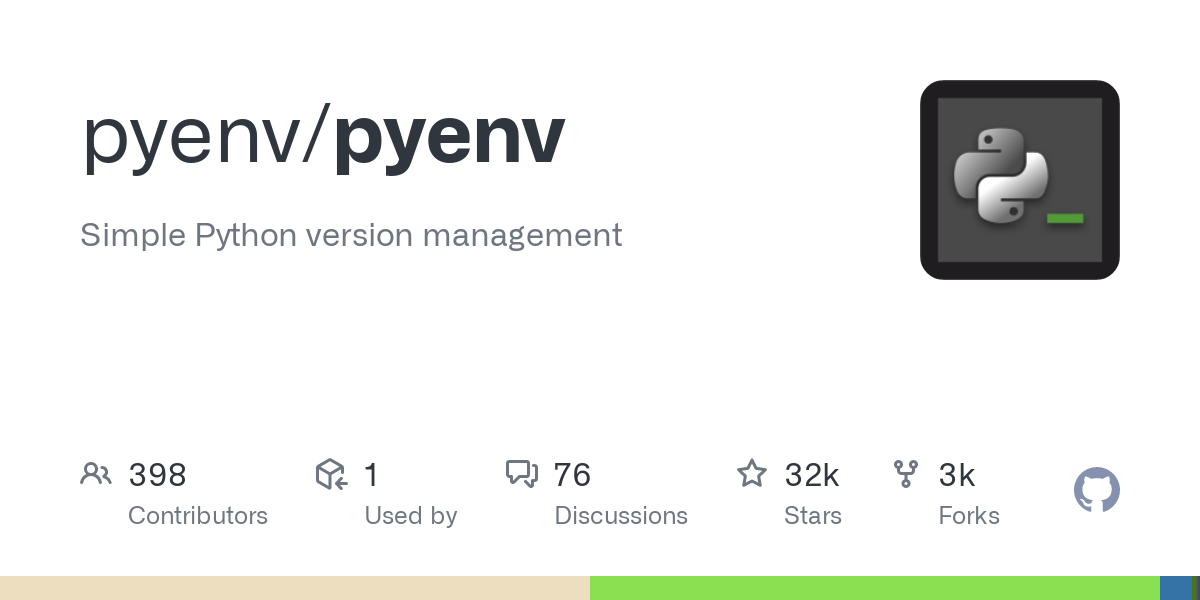- cross-posted to:
- hackernews@lemmy.smeargle.fans
- cross-posted to:
- hackernews@lemmy.smeargle.fans
Simple Python [executable] version management, that is.
I highly recommend rtx over pyenv/asdf. For one thing, you’ll still be able to
which pythonand get a useful response, as it works by altering yourPATHrather than relinking shims.I wouldn’t argue that a useful response from
whichisn’t a good thing, but how often do you need to use it with Python? I’ve been using pyenv with pipenv for years and almost never need to do this.How often? Sometimes 🤷.
There are other benefits to the tool that may be more meaningful for your usage, but of course I wouldn’t claim there’s anything wrong with using the tools you like.
I think when I used pyenv it was the single slowest part of my shell initialization.
I use it everyday. I feel it’s my secret sauce in python dev… pyenv-virtualenv is pretty useful with it also
I found
pyenvto be buggy at times, not properly setting the default (global)pythonversion. I ultimately uninstalledpyenvand also uninstalled any additional Python installs outside of the system default.Now, I do 100% of my Python work inside of Docker containers. This has solved any issues I’ve ever had with Python environments and
PYTHONPATH. It’s also made me a stronger developer when it comes to using Docker.I don’t see myself ever going back. A Docker container is the perfect Python environment.
When bringing people online from other languages, I first get them to find out what python there is in their environment and go with that if it’s recent enough. Then I tell them about pyenv and it’s plugins after a bit. Whenever I go straight into installing pyenv, it feels like I’m throwing some one in the deep ocean.
I’ve seen too many issues caused by relying on the system python. For starters, it’s much more difficult to fix if you screw something up.
I tell everyone to use pyenv – but only to install specific versions of python. I then create a primary venv for a couple of versions, and that’s what I use as my “system” version. Each project creates a separate venv based on the pyenv versions. I use autoenv to activate and deactivate as needed.
It’s a little more setup, but it avoids so much magic, and it’s extremely robust.
Another useful Python version manager is
asdfwith python plugin. The most helpful feature of asdf is ability to specify what Python version to use in certain directory by simply placing a.tool-versionsfile (contains the version number to use) in that directory. This makes working with multiple projects that requires different version of Python very seamless.pyenvalso has this with the.python-versionfile which will switch versions. And with the plugin, you can use virtualenvs in pyenv so that a.python-versioncan be simply:my-cool-project-virtualenvand switching to that directory automatically switches to it.This is a great feature
Automatically switching to virtual environment seems like an even useful thing to me. Thanks for mentioning it.
Ooh, thanks for mentioning
asdf! I’ve heard of it, but didn’t realize it could thatAFAIU, asdf uses pyenv for its Python plugin, but rtx does it all just a little better.
indeed, worth linking it: https://github.com/jdxcode/rtx
I’ve used
pyenvfor years and it’s an awesome tool. Keeps python binaries separate and it has avirtualenvplugin. I’ve gotten others to use it as well.It works great for library owners who need to run tox/nox on multiple versions of python in test suites. Love it.
I’m just incredibly happy that Fedora has every Python version in its official repo and I don’t need pyenv at all.








